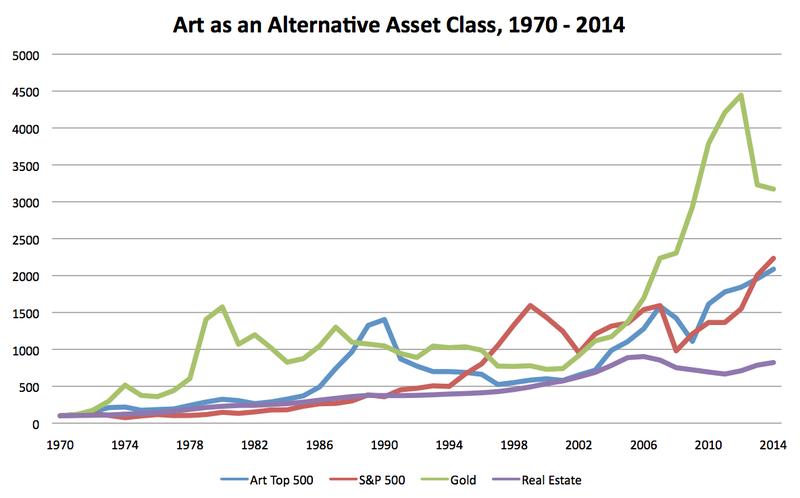

Graph showing the dip in the art market in the early 1990s as well as the striking recovery following the 2008/09 crisis, based on the top 500 artists, compared to gold, real estate, S&P index
Luxembourg School of Finance
Few sectors of the market have rebounded as robustly as art – particularly contemporary art, which has doubled in value since the beginning of the financial recovery following the 2008/09 financial market crisis.
Pundits on the side-lines have commented that such market growth is unsustainable, warning there is a bubble in the making that is sure to burst, as seen in the early 1990s and in 2008/09. Headline-grabbing sales of post-war and contemporary works for over $100 million appear to support this argument. But is a bubble really forming?
Market bubbles are generally defined as a dramatic escalation in the volume of trading in assets at prices that exceed their fundamental value, followed by a sudden collapse. Rational expectations put the fundamental value of an asset as equal to its expected discounted cash flow.
For most assets it is relatively easy to project this value – for example through dividends on stocks or rent on real estate. In the case of art, however, returns can rarely be correlated to costs of production.
To overcome this fundamental issue, Dr Roman Kräussl, Prof. Thorsten Lehnert and Dr Nicolas Martelin, all from the Luxembourg School of Finance at the University of Luxembourg, have used a new and direct statistical method of bubble detection.
They analysed more than one million auction records from the past 36 years, examining six major art styles.
They were thereby able to identify two historical speculative bubbles and find an explosive movement in today’s “Impressionist and Modern”, “Post-War and Contemporary”, “American” and “Old Masters” fine art market segments. In their research, published in the Journal of Empirical Finance, they conclude that today’s art market shows sign of overheating, raising the potential of a severe correction in the foreseeable future.
http://www.sciencedirect.com/science/article/pii/S0927539815001085 – Link to the publication
http://wwwen.uni.lu/recherche/fdef/luxembourg_school_of_finance_research_in_fina… – Personal page of Prof. Roman Kräussl












